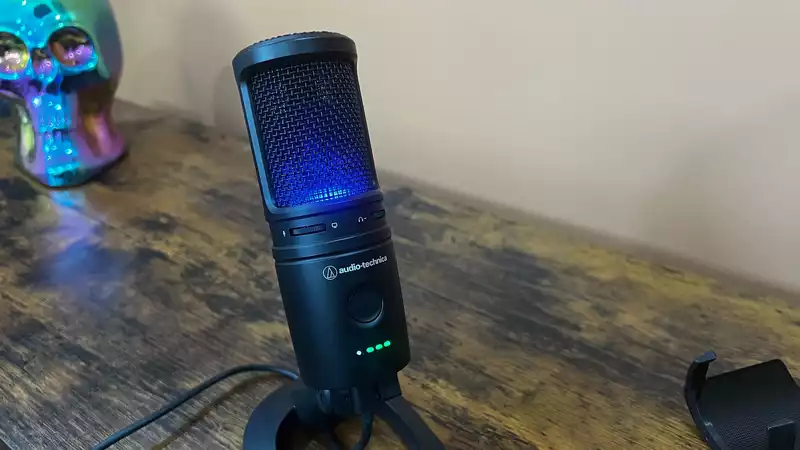Audio-Technica is known for its excellence when it comes to capturing professional-grade audio. The company has not shied away from its efforts when it comes to developing great microphones for gamers, streamers, and budget-conscious content creators.
The AT2020USB-XP is a premium microphone that delivers the great sound quality expected from such a tradition, with some impressive upgrades for seasoned users who want more control over their voices.
The design of the AT2020USB-XP differs little from the previously tested AT2020+, other than a sturdy stand that does not wobble with the slightest breath, and another welcome change from the AT2020+ is that the USB Type-C connection has replaced the USB-B input The microphone is now equipped with a USB Type-C connection (yikes). On the back of the microphone is a headphone jack, and on the front are touch-sensitive mute buttons with LED light indicators and a mix control dial.
I was especially excited to try out two new features: automatic gain control and noise reduction, which can be activated with a small button under the microphone. The microphone's onboard digital processing does a decent job of maintaining a constant audio level as the volume of your voice fluctuates, as you can hear in the sample below. However, it is more effective to amplify quiet voices than to reduce the volume of loud voices.
The auto-gain feature can be a real asset for streamers who tend to speak in a quiet voice and need to constantly increase the gain. The Noise Reduction button provides three levels of noise reduction, effectively reducing unwanted background noise.
Noise Reduction was successful in removing the loud hum of my air conditioner, but was not as effective at the highest setting in filtering out keyboard taps and mouse clicks. The good thing about this plug-and-play microphone is that it does not use software to accomplish this.
I mentioned the stand earlier, and there is a small design element to this stand that I really appreciate. On the bottom of the stand, there is a slight cutout for the USB cable, which allows the cable to be threaded neatly underneath to keep everything organized and presentable. This small detail is appreciated by those who constantly struggle with messy cable routing.
The microphone's wide frequency response range ensures that no subtle nuances are lost during recording. As you can hear in the sample below, my voice sounds crisp and clear without the auto-gain turned on. The next recording with the auto-gain turned on did not sound as good, and my voice was basically too loud. If you speak softly this may work for you.
The clip-on pop filter adds a nice visual touch, but I am not sure if it effectively addresses repellent sounds. For podcasters and people who talk a lot on recordings, it may be wise to invest in a more professional pop filter.
It is worth noting that the AT2020USB-XP offers only one polarity pattern and lacks the versatility of the Blue Yeti X, which can handle multiple speakers and a variety of situations.
In terms of sound and price, the AT2020USB-XP competes with the HyperX Quadcast S and the Elgato Wave 3. You can hear how it positions itself against these two in the sound comparison below.
If pressed, the other mics have more personality with fun designs, color options, and in the case of the Quadcast S, RGB lighting. However, if you are a streamer who does not feature the microphone on camera, this may not be a major concern, especially considering the outstanding sound quality offered by the AT2020USB-XP.
The outstanding audio reproduction makes it easier to capture the nuances of voices during live podcasts and other recording tasks, eliminating the need for excessive post-processing. The AT2020USB-XP not only sounds great, it looks sleek and sturdy on your desk.
.

Comments